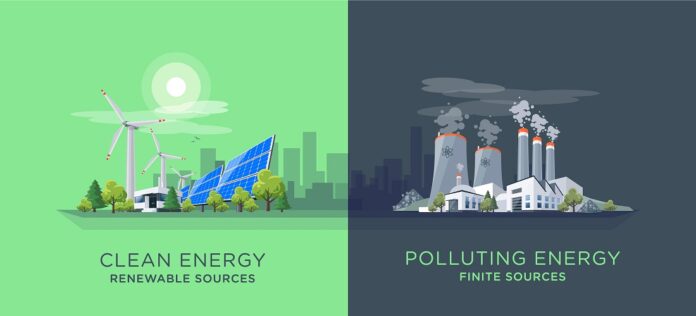Scientists have developed a laser technology which could open avenues for clean fuel and energy technologies in the future.
We urgently need environment friendly and sustainable ways to replace fossil fuels, oil and natural gas. Carbon dioxide (CO2) is an abundant waste product produced by all activities and sources which rely on fossil fuels. About 35 billion metric tons of Carbon dioxide is released into our planet’s atmosphere annually as a waste product from electricity generating power plants, vehicles and industrial setups across the globe. To mitigate the effects of CO2 on global climate, this wasted CO2 could rather be converted into usable energy like carbon monoxide and other energy-abundant sources. Example, reacting with water CO2 produces energy-rich hydrogen gas, when reacted with hydrogen it produces useful chemicals like hydrocarbons or alcohol. Such products could be used for various purposes and that too on a global industrial scale.
Electrocatalysts are catalysts which take part in electrochemical reactions – when a chemical reaction is taking place but electrical power is also involved. Example, the right catalyst can help to react hydrogen and oxygen to make water in a controlled manner, otherwise it will just be a random mixture of two gases. Or even to produce electricity by burning hydrogen and oxygen. Electrocatalysts modify or increase the rate of chemical reactions without themselves getting consumed in the reaction. In context with CO2, electrocatalysts are seen as relevant and promising in terms of achieving efficiency ‘step-change’ in reduction of CO2 as desired.
Unfortunately, the exact mechanism of how these electrocatalysts work is not completely understood and it remains a significant challenge to differentiate between layers of short-lived intermediate molecules with the “noise” of inactive molecules in the solution. This limited understanding of the mechanism poses difficulties in any possible alteration in design of electrocatalysts.
Scientists at Liverpool University UK have demonstrated a laser-based spectroscopy technique for electrochemical reduction of carbon dioxide in-situ in their study published in Nature Catalysis. They used Vibrational Sum-Frequency Generation or VSFG spectroscopy for the first time along with electrochemical experiments to explore a catalyst (Mn(bpy)(CO)3Br) which is seen as a promising CO2 reduction electrocatalyst. The behaviour of crucial intermediaries which are present in a reaction’s catalytic cycle for a very short interval was observed for the first time. VSFG technology makes it possible to follow behaviour and movement of even extremely short-lived species in a catalytic cycle and therefore helps us to understand how electrocatalysts operate. So, the exact behaviour of how electrocatalysts operate in a chemical reaction is understood.
This study provides insights into some of the complex chemical pathways and can allow us to create new designs for electrocatalysts. Researchers are already investigating on how to improve sensitivity of this technique and are developing a new detection system for better signal to noise ratio. This approach could help open up avenues for efficient clean fuel and garner more potential for clean energy. Such a process eventually needs to be industrially scaled up for achieving more efficiency at the commercial level. Handling large volumes of CO2 produced from fossil fuel burning plants will require industrial advancement.
***
{You may read the original research paper by clicking the DOI link given below in the list of cited source(s)}
Source(s)
Neri G et al. 2018. Detection of catalytic intermediates at an electrode surface during carbon dioxide reduction by an earth-abundant catalyst. Nature Catalysis. https://doi.org/10.17638/datacat.liverpool.ac.uk/533
***






































